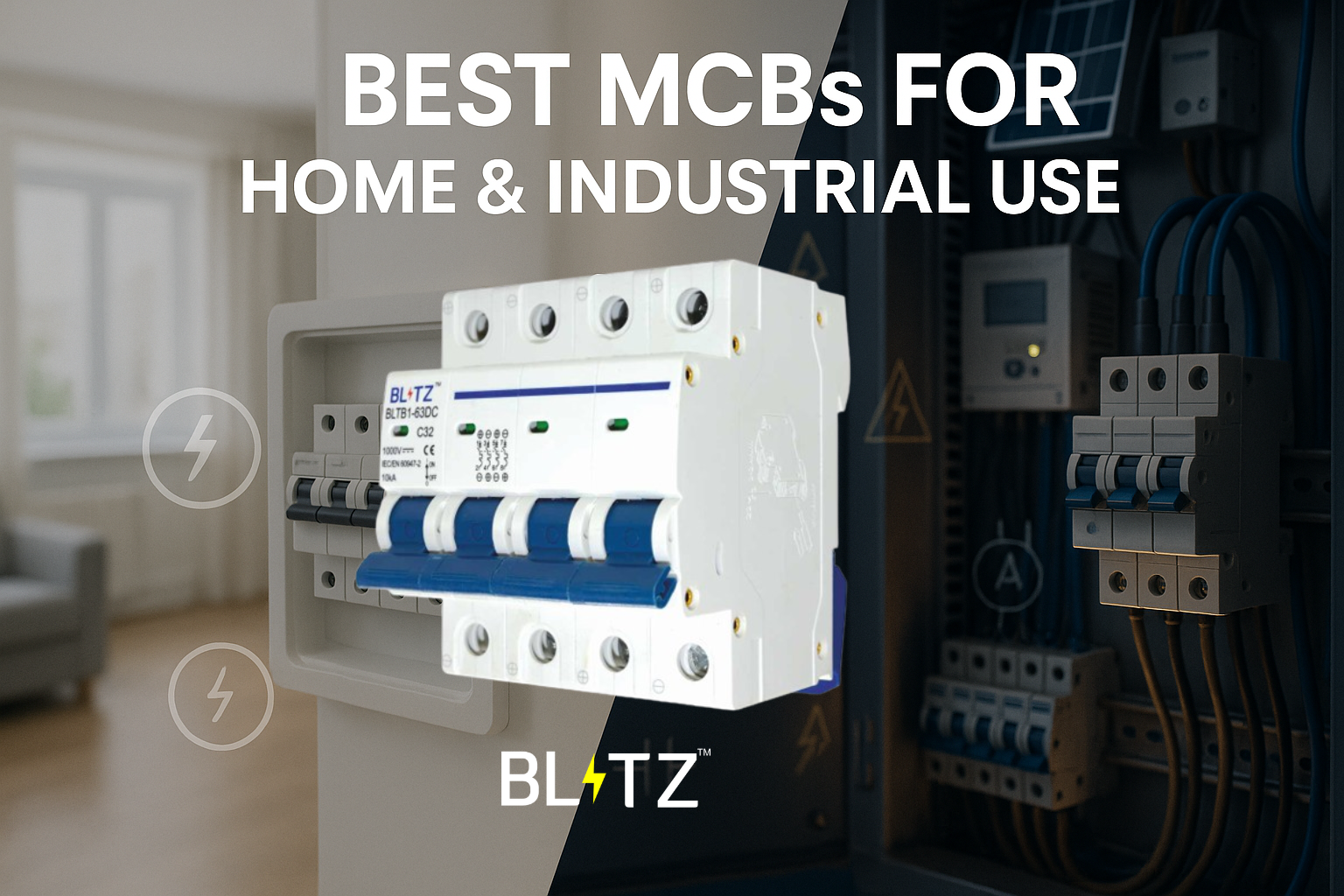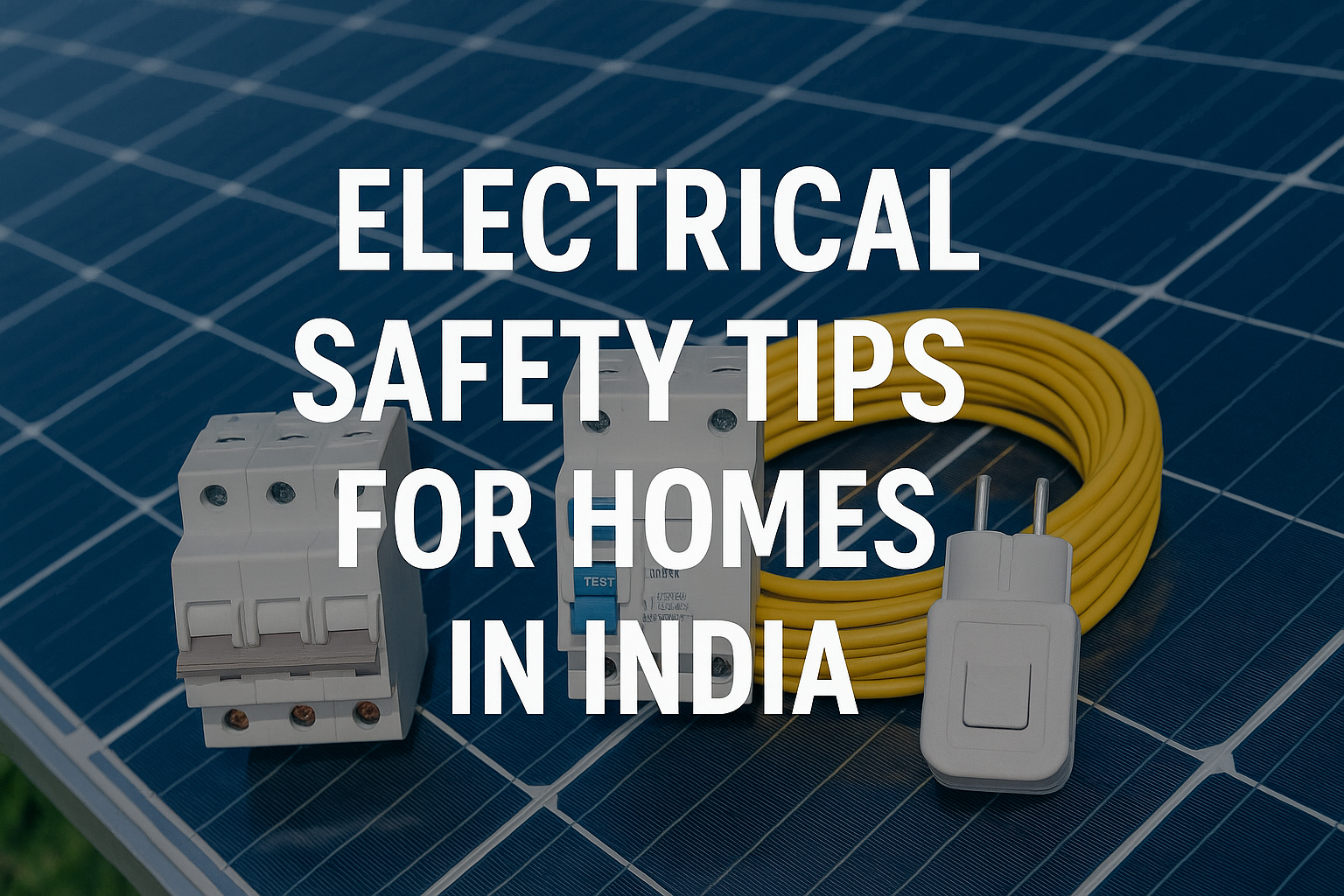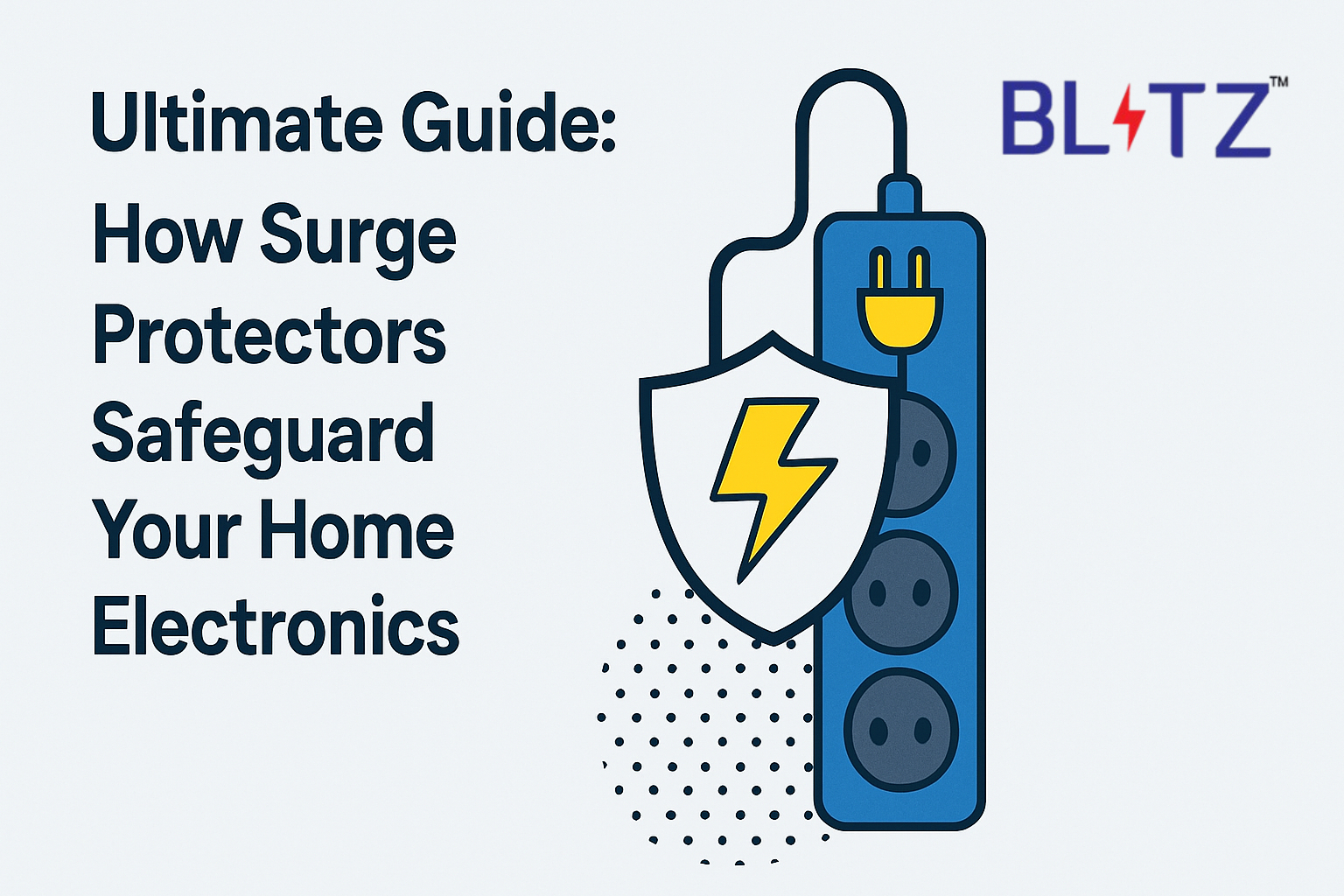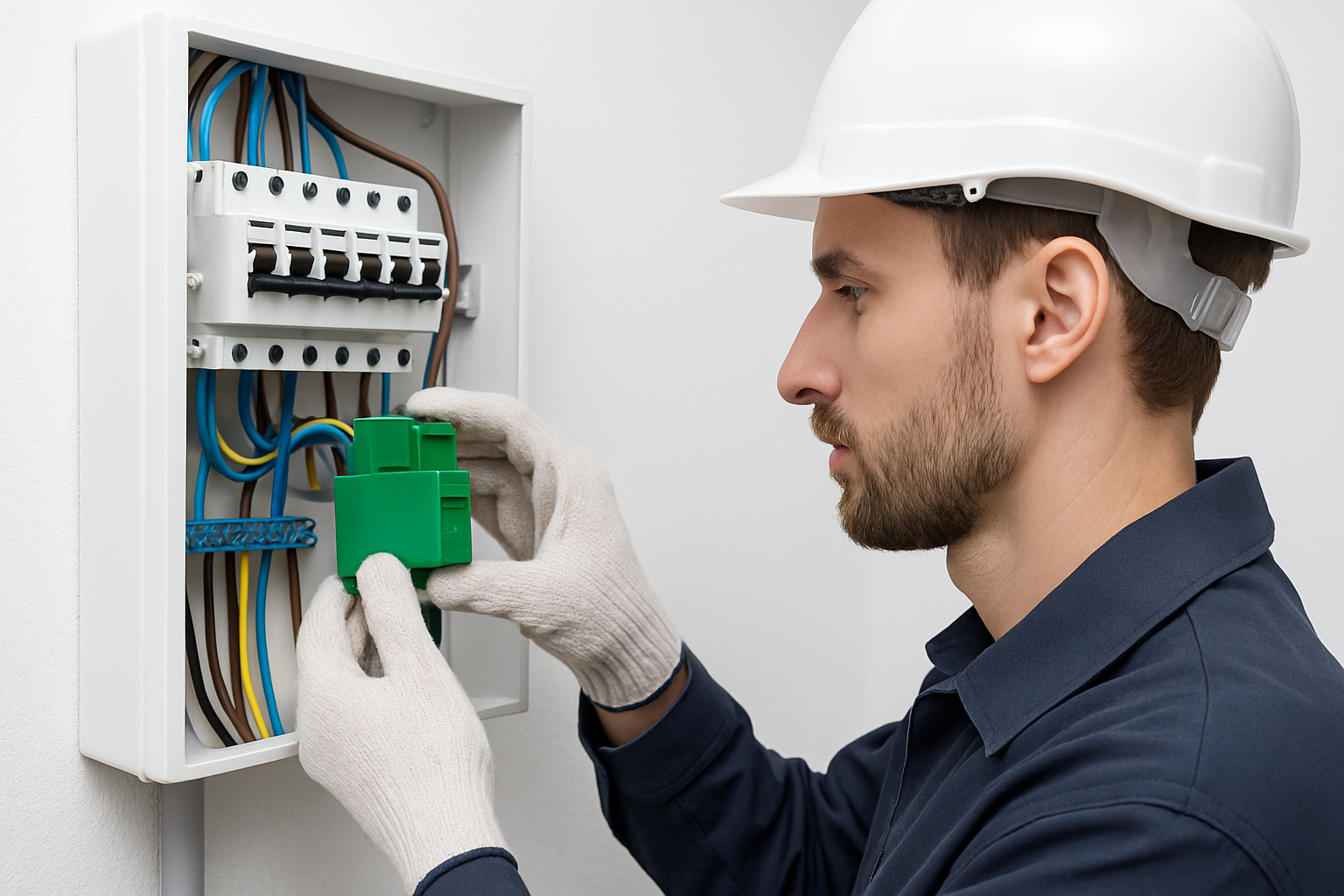
Difference Between SPD and MCB - Complete Guide
Learn the key differences between SPD and MCB in this complete guide, covering their functions, uses, and importance in electrical safety.
Difference Between SPD and MCB - Complete Guide
Electrical protection is an extremely important process in establishing the safety, reliability and life of the new electrical systems. Electrical devices such as protective devices help prevent electricity faults, equipment damage and even fire in the homes, offices, factories or even in solar installations.
The SPD (Surge Protecting Device) and the MCB (Miniature Circuit Breaker) are both regarded to be two of the most essential protection appliances of the contemporary world. The two are employed in different mechanisms although they are used to protect but to ensure different kind of electrical problems are addressed.
This entire tutorial will make you understand what SPD and MCB are, how they work, the distinction between them and the cause as to why they are both equally important to your electrical systems.
What is an MCB (Miniature Circuit Breaker)?
Miniature Circuit Breaker (MCB) is a safety gadget that uses the detection of over load or short circuit to automatically deenergize electric circuits. To make it easier to understand, it is a fuse which can be reset in case of current overload which is bound to blow your wiring and equipments.
How MCB Works
When the electrical current flowing through a circuit exceeds its rated value, heat builds up within the MCB. This heat causes the release of a tripping mechanism which breaks the circuit. The MCB instantly responds in case of a short circuit and in this way, the destruction or fire are avoided.
The MCB can be reset by hand after the fault has been cleared and this allows it to be reusable and easy to use compared to the traditional fuses.
Role of MCB in Electrical Systems
- Eliminates the possibility of overheating and fire.
- Prevents overcurrent in the appliances, wiring and devices.
- Assures of faulty circuit disconnection safety.
- Manual switch mode of maintenance and testing.
The MCBs are used in residential and commercial distribution boards that provide a secure way of distributing power across numerous circuits.
What is an SPD (Surge Protection Device)?
An SPD, or Surge Protection Device, provides protection against sudden jolts of electrical system damage against lightning, switching of a grid, or a power outburst. The duration of these surges is micro seconds but has the potential to cause a lot of damage to delicate equipment like the computer, solar inverters, router, or TV.
How SPD Works
An SPD is connected in parallel to the electrical circuit. Under normal conditions, it remains inactive. But in case voltage surge happens, the SPD instantly redirects the superfluous voltage to the ground and keeps the voltage within the system at a steady level.
It isolates the whole set by impeding the flow of the incoming power and the connected devices, eliminating transient overvoltages on the entire set-up.
Where SPDs Are Commonly Used
SPDs are used in:
- Residential homes – to protect electronics from lightning surges.
- Commercial property- information in data centers, office equipment and network equipment.
- Industrial plants - to secure PLCs and control systems as well as machinery.
- Solar installations - to protect the inverters and solar panels against lightning surges.
Main Difference Between SPD and MCB
The work of both SPD and MCB is to protect electrical systems, which however have completely different functions. The MCB is designed to guard against faults of current type whereas the SPD against faults of voltage.
The following is a comparative table to the point:
| Parameter | SPD (Surge Protection Device) | MCB (Miniature Circuit Breaker) |
|---|---|---|
| Function | Protects against voltage surges or transients | Protects against overcurrent and short circuits |
| Protection Type | Overvoltage protection | Overcurrent protection |
| Working Principle | Diverts excess voltage to the ground | Interrupts current flow when current exceeds rated limit |
| Reaction Time | Microseconds | Milliseconds |
| Connection Type | Connected in parallel with circuit | Connected in series with circuit |
| Response to Faults | Works during lightning or voltage spikes | Works during overload or short circuit |
| Reusability | May need replacement after heavy surge | Can be reset and reused |
| Installation Point | Main panel or near sensitive loads | Distribution board or branch circuits |
| Standards | IEC 61643 / IS/IEC 62305 | IEC 60898 / IS 8828 |
| Typical Applications | Solar systems, IT networks, industrial panels | Home, commercial, and industrial wiring |
How SPD and MCB Complement Each Other
Both SPD and MCB should be used, in order to attain full electrical protection.
The MCB will provide safeguard against overcurrent faults such as overloads and short circuits. The SPD protects the system against lightning or grid disturbance overvoltage.
An example of a solar system is that the SPD safeguards the inverter and panels against external surges whereas the MCB safeguards the circuit against internal short circuiting. Both devices when used jointly will provide a full layer of protection to your whole installation.
Types of SPD
SPDs are classified into three main categories based on their protection level:
- Type 1 SPD: Installed at the building’s main distribution board. It protects against direct lightning strikes or high-energy surges entering through external lines.
- Type 2 SPD: Used in sub-distribution panels to protect connected devices from residual surges after Type 1 SPD.
- Type 3 SPD: Installed close to sensitive equipment like computers, TVs, or data systems for final-level protection.
In most residential and commercial setups, Type 2 SPDs are widely used for effective system protection.
Types of MCB
MCBs are distinguished according to the time that they take to give their response in an overcurrent situation. As a rule of thumb, those that first react are the most common ones:
- Type B MCB: Stops the circuit between 3-5 times the current value. It is mostly used in the electrical circuits of households with low inrush current devices, e.g., the lighting or heating systems.
- Type C MCB: It is a component of the commercial electrical systems with moderate inductive loads such as fans, motors, and air conditioners. Typically, the C MCB removes the circuit between 5-10 times the current value.
- Type D MCB: It disconnects the circuit between 10-20 times the current value. Is the most appropriate option for heavy-duty industrial applications like compressors and large motors.
Choosing the correct MCB type ensures both protection and stable performance depending on the nature of your electrical load.
Applications of SPD and MCB
The following table summarizes their primary applications across different sectors:
| Sector | Role of SPD | Role of MCB |
|---|---|---|
| Residential | Protects home appliances from lightning or surge damage | Protects household circuits from overloads |
| Commercial | Safeguards servers, routers, and IT equipment | Protects lighting and power circuits in buildings |
| Industrial | Protects automation panels and control systems | Protects machinery and heavy motors |
| Solar Systems | Prevents inverter and panel damage due to surges | Isolates solar circuits during faults |
We are sure you noticed that the elements are different and very important for the protection of your electrical system.
Importance of Using Both SPD and MCB
In modern electrical networks, installing both SPD and MCB is not optional — it’s essential. Relying on only one leaves your system vulnerable. MCBs alone cannot handle voltage surges, and SPDs cannot protect against current overloads.
When used together, they:
- Offer complete protection from both current and voltage faults.
- Make the system more reliable and the equipment last longer.
- Downtime and repair costs should be reduced.
- Guarantee conforming to the electrical safety standards.
- Give a sense of security to homeowners as well as engineers.
In the case of extremely sensitive devices such as solar power systems, control panels, or data centers, the use of SPD and MCB together is the most reliable way to ensure the continuous and safe functioning of the setups.
Real-Life Example – Renewable Energy Installation
We can take a solar energy system as an example.
A thunderstorm and a lightning strike near the house can be the causes of a surge that runs through the DC lines and reaches the inverter. Without an SPD, the inverter might be destroyed immediately.
Let us now consider an overload or short circuit happening in the same system - the MCB trips instantly to disconnect the circuit to avoid further damage or fire risk.
This example shows how both SPD and MCB protect the system from two completely different but equally dangerous electrical issues.
FAQs
Conclusion
Two of the most significant components of an electrical protection system of the modern world are the Surge Protection Device (SPD) and Miniature Circuit Breaker (MCB). The MCB helps both to protect against overloads and short circuit and the SPD against lightning or switching induced voltage surges.
They do not replace each other but supplementary devices which guarantee safety, reliability, and efficiency. Combining the two in your electrical design not only increases the life span of your equipment, but it also makes sure that your equipment is in line with international safety standards.




